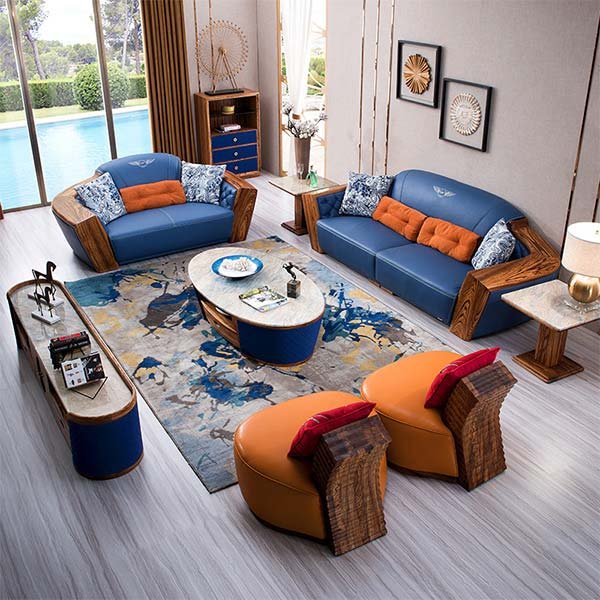“Protect your furniture, embrace their nature – provide a scratching haven for your feline friend.”
The Importance of Providing Cats with Appropriate Scratching Surfaces
Cats are known for their natural instinct to scratch, and unfortunately, this behavior often leads to damage to our furniture. Many cat owners wonder why their furry friends have such a strong urge to scratch and how they can redirect this behavior. Understanding the importance of providing cats with appropriate scratching surfaces is crucial in maintaining a harmonious living environment for both cats and their owners.
First and foremost, scratching is a natural behavior for cats. It serves several purposes, including stretching their muscles, sharpening their claws, and marking their territory. By scratching, cats remove the outer layer of their claws, revealing a sharper and healthier set of claws underneath. Additionally, scratching allows cats to stretch their bodies, promoting flexibility and muscle tone. It is essential to recognize that scratching is not a destructive behavior but rather a necessary and instinctual one.
To prevent cats from scratching furniture, it is crucial to provide them with appropriate scratching surfaces. These surfaces should be sturdy, tall enough for the cat to fully stretch, and covered in a material that cats find appealing to scratch. Common materials used for scratching surfaces include sisal, cardboard, and carpet. It is important to experiment with different materials to find the one that your cat prefers. By providing cats with suitable scratching surfaces, you can redirect their scratching behavior away from your furniture.
Another reason why providing cats with appropriate scratching surfaces is important is that it helps to prevent behavioral issues. Cats that do not have access to suitable scratching surfaces may resort to scratching furniture, walls, or other household items. This can lead to frustration and stress for both the cat and the owner. By providing cats with designated scratching surfaces, you can help them release their energy and reduce the likelihood of destructive behavior.
Moreover, appropriate scratching surfaces can help maintain the health of your cat’s claws. Regular scratching helps to remove the outer layer of the claws, preventing them from becoming overgrown or ingrown. Overgrown claws can cause discomfort and pain for cats, making it difficult for them to walk or climb. By providing cats with suitable scratching surfaces, you can help them keep their claws in good condition and avoid potential health issues.
In conclusion, providing cats with appropriate scratching surfaces is essential for several reasons. It allows cats to engage in their natural behavior, helps prevent destructive behavior, and maintains the health of their claws. By understanding the importance of scratching for cats and providing them with suitable alternatives to furniture, you can create a harmonious living environment for both you and your feline companion. Remember to choose scratching surfaces that are sturdy, tall enough for your cat to stretch, and covered in a material that they find appealing. With the right scratching surfaces, you can redirect your cat’s scratching behavior and protect your furniture.
Understanding the Natural Instincts Behind Cat Scratching Behavior
Understanding the Natural Instincts Behind Cat Scratching Behavior
Cats are known for their love of scratching furniture, and it can be frustrating for owners who find their beloved couches and chairs torn to shreds. However, it’s important to understand that scratching is a natural behavior for cats and serves several important purposes. By understanding the reasons behind this behavior, owners can find ways to redirect their cats’ scratching instincts and protect their furniture.
One of the main reasons why cats scratch furniture is to mark their territory. Cats have scent glands in their paws, and when they scratch, they leave behind their scent as a way of claiming the area as their own. This behavior is instinctual and helps cats establish their presence in their environment. By scratching furniture, cats are essentially saying, “This is mine.”
Another reason why cats scratch furniture is to stretch and exercise their muscles. Scratching helps cats maintain their flexibility and keeps their muscles toned. It’s a way for them to release energy and relieve stress. By providing cats with appropriate scratching posts or boards, owners can encourage them to redirect their scratching behavior to a more suitable location.
Cats also scratch to remove the dead outer layer of their claws. Scratching helps cats shed the old claw sheaths and reveal the sharp, new claws underneath. It’s a natural process that helps keep their claws healthy and sharp. By providing cats with scratching surfaces made of materials like sisal or cardboard, owners can help facilitate this natural grooming behavior.
Additionally, scratching serves as a form of communication for cats. When they scratch, they leave visible marks that can be seen by other cats. This visual communication helps establish boundaries and prevent conflicts between cats. It’s their way of saying, “This is my territory, stay away.” By providing multiple scratching surfaces in different areas of the house, owners can help prevent territorial disputes among their cats.
It’s important to note that punishing cats for scratching furniture is not an effective solution. Cats do not understand punishment in the same way that humans do, and it can lead to fear and anxiety. Instead, owners should focus on providing appropriate alternatives for scratching, such as scratching posts or boards. These should be placed in areas where the cat spends a lot of time, such as near their favorite sleeping spots or by windows.
In conclusion, understanding the natural instincts behind cat scratching behavior is crucial for owners who want to protect their furniture while still allowing their cats to engage in this natural behavior. By providing appropriate scratching surfaces, redirecting their cats’ scratching behavior, and creating a cat-friendly environment, owners can ensure that their cats are happy and satisfied while keeping their furniture intact. Remember, scratching is a natural behavior for cats, and with the right approach, it can be managed effectively.
Tips and Tricks for Redirecting Cat Scratching to Prevent Furniture Damage
Why do cats scratch furniture? This is a question that many cat owners ask themselves when they find their beloved feline scratching away at their expensive couch or chair. It can be frustrating and costly to constantly replace furniture that has been damaged by a cat’s claws. However, understanding why cats scratch furniture is the first step in finding a solution to this problem.
Cats scratch for a variety of reasons, and it is important to remember that scratching is a natural behavior for them. One reason cats scratch furniture is to mark their territory. Cats have scent glands in their paws, and when they scratch, they leave behind their scent, which helps them establish their territory. This behavior is instinctual and cannot be completely eliminated.
Another reason cats scratch furniture is to stretch their muscles and remove the outer layer of their claws. Scratching helps cats keep their claws healthy and sharp. It is important for cats to have an outlet for this behavior, as it is a natural part of their grooming routine.
So, how can you redirect your cat’s scratching to prevent furniture damage? One option is to provide your cat with an appropriate scratching surface. This can be a scratching post or a scratching pad. It is important to choose a scratching surface that is tall enough for your cat to fully stretch out and sturdy enough to withstand their scratching. Place the scratching surface near the furniture that your cat has been scratching, as this will help redirect their attention.
You can also make the furniture less appealing to your cat by using deterrents. There are sprays available that have a scent that cats find unpleasant, such as citrus or lavender. Spraying these deterrents on the furniture can discourage your cat from scratching it. Additionally, you can cover the furniture with a material that cats do not like, such as aluminum foil or double-sided tape. Cats do not like the texture of these materials and are less likely to scratch them.
Another tip for redirecting your cat’s scratching is to provide them with plenty of mental and physical stimulation. Boredom can often lead to destructive behavior, such as scratching furniture. Make sure your cat has plenty of toys to play with and engage in interactive play sessions with them. This will help keep them entertained and reduce their desire to scratch furniture.
It is important to remember that redirecting your cat’s scratching behavior takes time and patience. It may be necessary to try different techniques to find what works best for your cat. Consistency is key, so make sure to provide your cat with appropriate scratching surfaces and discourage them from scratching furniture consistently.
In conclusion, understanding why cats scratch furniture is the first step in finding a solution to this problem. Cats scratch to mark their territory and keep their claws healthy. To redirect your cat’s scratching, provide them with an appropriate scratching surface, use deterrents, and provide plenty of mental and physical stimulation. With time and patience, you can prevent furniture damage and keep both you and your cat happy.
Заключение
Заключение: Кошки царапают мебель по нескольким причинам. Одна из них – это естественный инстинкт, связанный с уходом за когтями и отметкой своей территории. Кошки также могут царапать мебель из-за стресса, скучности или недостатка физической активности. Чтобы предотвратить повреждение мебели, рекомендуется предоставить кошке альтернативные места для царапания, обеспечить ей достаточно игрушек и активности, а также использовать специальные средства для защиты мебели.



